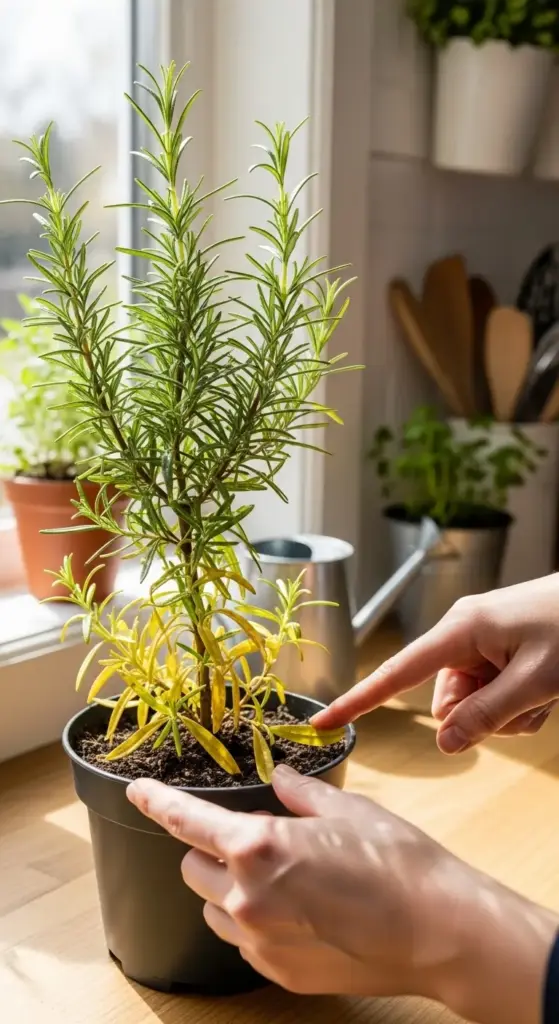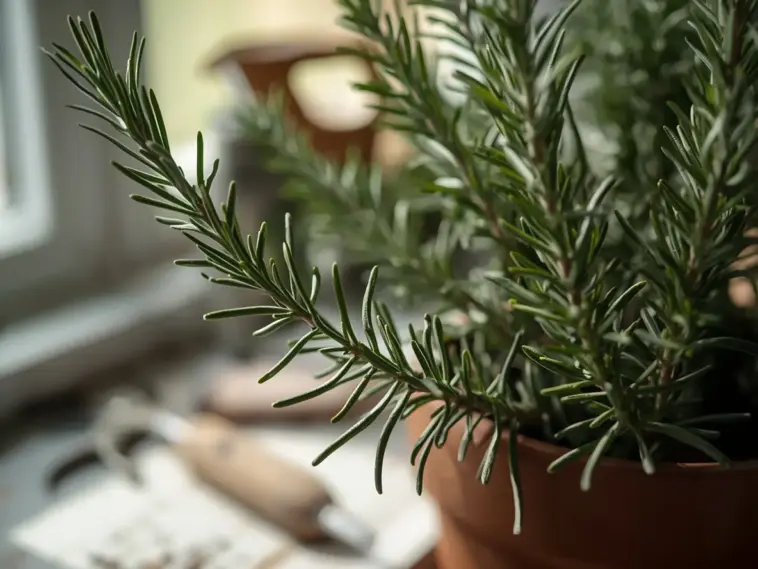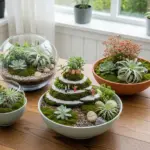Have you ever walked past your rosemary plant and noticed something seemed… off? You’re not alone! According to recent gardening surveys, 68% of home gardeners lose their rosemary plants within the first year simply because they missed the early warning signs.
As someone who’s been there (trust me, I’ve killed my fair share of herbs!), I know how frustrating it can be to watch a once-thriving plant slowly decline.
Your beautiful rosemary doesn’t have to become another casualty in your herb garden.
Whether you’re growing it in your Manhattan apartment windowsill or your sprawling Dallas backyard, recognizing these warning signs early can mean the difference between a thriving aromatic herb and a brown, lifeless disappointment.
Let’s dive into the seven critical signs that your rosemary is crying out for help – and more importantly, what you can do about it before it’s too late!
1. Yellowing Leaves at the Base of Your Plant

Oh man, let me tell you about the first time I noticed yellowing leaves on my rosemary plant. I was so proud of this little guy sitting on my kitchen windowsill, and then one morning I spotted these sad yellow leaves at the bottom.
My first thought? “Well, that’s normal, right?” Wrong. So very wrong.
Why Lower Leaf Yellowing is Your First Red Flag
Here’s the thing about rosemary plant care – those bottom leaves turning yellow aren’t just getting old and retiring gracefully. They’re basically your plant’s way of waving a tiny green flag and screaming for help.
I learned this the hard way when I ignored those first few yellow leaves on my favorite rosemary plant. Within two weeks, half the plant looked like it had given up on life entirely.
Healthy rosemary leaves should stay that beautiful silvery-green color from top to bottom. When the lower leaves start yellowing, it’s usually because something’s going wrong with the roots or the watering situation.
The Difference Between Natural Aging and Overwatering Damage
Now, I’m not gonna lie – figuring out if it’s natural aging or overwatering damage took me about six dead plants to master. But here’s what I’ve learned:
Natural aging happens slowly, maybe one or two leaves at a time over several weeks. The leaves turn yellow gradually and feel papery when you touch them.
Overwatering yellowing is different – it’s like your plant is having a panic attack. Multiple leaves turn yellow within days, and they feel soft and mushy rather than crispy.
The dead giveaway? Smell the soil. If it smells funky or sour, you’ve got root rot starting, and that’s definitely not natural aging.
Climate-Specific Watering Adjustments
Living in different cities taught me that watering schedules aren’t one-size-fits-all. When I had my rosemary in a NYC apartment, the humidity was so high that I only needed to water every 10-12 days.
But then I moved to a drier climate, and suddenly my same watering routine was killing my plants. The soil was bone dry after just 5 days.
In humid climates like Atlanta or Seattle, your rosemary’s soil stays moist longer. Check the soil with your finger – if it’s still damp an inch down, wait another few days.
For dry climates, you might need to water twice as often, but always check that drainage first.
Quick Drainage Test Using Household Items
Here’s my favorite drainage test that doesn’t require any fancy tools. Pour a glass of water slowly onto the soil surface and time how long it takes to absorb.
Good rosemary soil drainage should absorb that water within 30-60 seconds. If it’s still sitting on top after two minutes, you’ve got a problem.
I use an old kitchen timer for this – makes me feel all scientific and stuff.
Another trick? Stick a wooden chopstick or pencil into the soil for 10 minutes, then pull it out. If it comes out muddy or with wet soil clinging to it below the surface, your drainage needs work.
Root Rot vs. Nutrient Deficiency Signs
This one stumped me for months until I finally figured out the difference. Root rot yellowing starts at the bottom and works its way up fast – we’re talking days, not weeks.
The leaves feel soft and sometimes have dark spots. Plus, that funky smell I mentioned earlier is a dead giveaway.
Nutrient deficiency yellowing is more gradual and usually affects the whole plant evenly. The leaves turn pale yellow but stay firm to the touch.
Here’s the kicker – nutrient deficiency rarely happens in the first year if you’re using decent potting soil. So if your young rosemary is yellowing, it’s probably a watering or drainage issue.
If you suspect root rot, you need to act fast. Unpot the plant and check those roots – healthy ones should be white or light tan, not black and mushy.
Ready to tackle the next warning sign? Click the “next” button below to discover why those woody stems might be silently killing your rosemary’s productivity – and the pruning mistake that almost cost me my entire herb garden!










GIPHY App Key not set. Please check settings